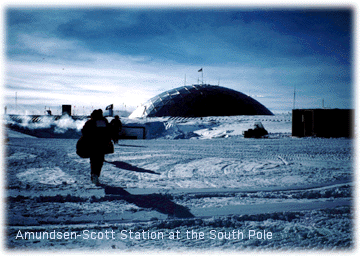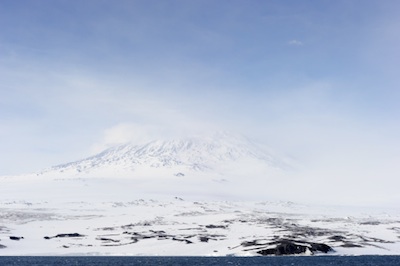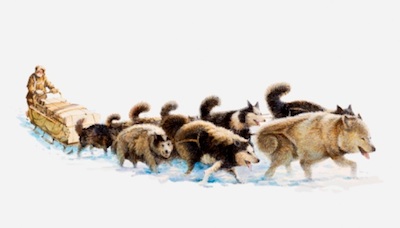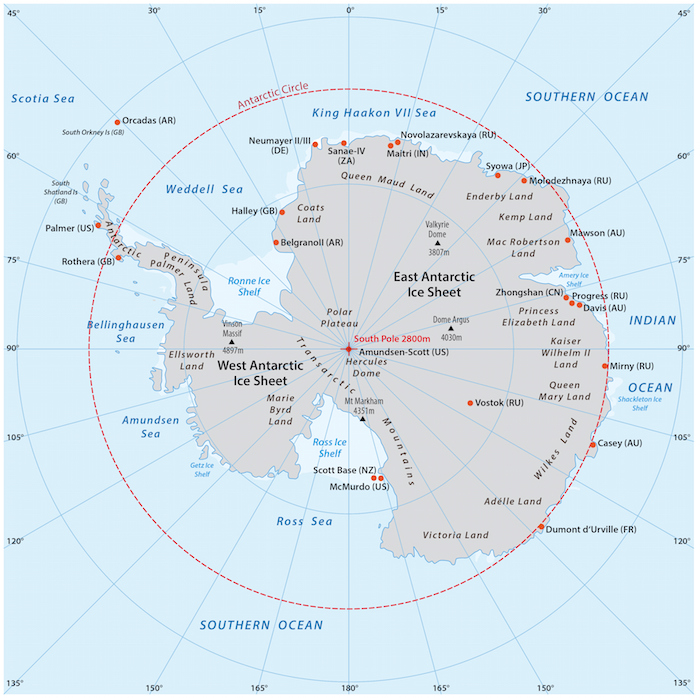Early Antarctic Exploration timeline
1773 - 1958:
Captain James Cook
1772, 1773, 1775 James Cook’s first circumnavigation of the Antarctic
James Cook
Englishman James Cook made several trips south, searching for the southern continent that so many explorers thought must be there. He was the first to sail across the Antarctic Circle before the ice made him turn the ship around. In 1773 and 1774, he again sailed to find the continent, again crossing the Antarctic Circle, and going further south than anyone else had been. In 1775 he again tried, and this trip completed a circle around the outside of the continent. (circumnavigation).
1823 Furthest south: James Weddell
Weddell seal pups. ©Getty ImageS
Englishman James Weddell led an expedition to find the continent. His ship reached furthest point south ever reached, further south than Cook had reached. However, they did not sight the continent and turned back. The Weddell Sea and Weddell seals are named after him.
1820 First sight of Antarctica: Fabian Gottlieb von Bellingshausen
Mt Erebus: one of the mountains and an Antarctic volcano ©Getty Images
The Czar of Russia put Fabian Gottlieb von Bellingshausen in charge of an expedition to find the southern continent. He mapped the South Sandwich Islands, which Cook had seen but not explored. Bellinghausen's work proved that these were an archipelago, or group, of islands, one of which is now known as Bellinghausen Island. The expedition travelled further, and crossed the Antarctic Circle. They saw big areas of ice and icy mountains in the distance. Bellinghausen Sea and the Russian research station Bellinghausen in the South Shetlands are named after him.
Three days later, a British team of Edward Bransfield and William Smith had a clear view of ice and mountains and are credited with the first sighting of the continent.
1840 First landing on Antarctic: Dumont d'Urville
A pair of Adelie penguins. ©Getty Image
The Emperor of France decided in 1836 that France should take part in the exploration of the new southern continent and assigned Dumont d'Urville to lead and expedition to locate the South Magnetic Pole. In January 1838 the ships found the Antarctic peninsula region. They were unable to progress much further and went to Chile and then Tasmania. In 1840 they set sail for Antarctica again and this time the first ever landing on the continent was made. The area where they landed was named Terra Adelie after d'Urville's wife Adelie. There were penguins there that no one had ever seen, and so d'Urville named them, also after his wife. They are now known as Adelie penguins.
1841 Sight of volcanoes: James Clark Ross
British naval officer James Clark Ross led expeditions to explore the Arctic and to discover the North Magnetic Pole. Between 1839 and 1843, he mapped most of Antarctica's coastline, discovering the Ross Sea in 1841, and two volcanoes which he named after the two ships of his expedition : Mt Terror and Mt Erebus.
Antarctic exploration with dog sled. ©Getty Images
1898-1900 First planned winter stay, first dog sleds: Carsten Borchgrevink
The Southern Cross Expedition, also known as the British Antarctic Expedition. Led by Carsten Borchgrevink, this expedition was the first to spend winter on Antarctica by plan, the first to land on the great ice barrier and to introduce dog sleds to travel on the continent. The sled journey took them further south than anyone had so far been. The expedition carried out scientific observations. Their base was of pre-fabricated wooden huts that were little more than large sheds. There were many difficulties with them, due to draughts and carbon monoxide poisoning due to lack of ventilation and burning fuel inside the huts.
Amundsen at the South Pole, where he raised the Norwegian flag. ©Getty Images
1902 First flight in Antarctica: Robert Falcon Scott
A balloon carrying Robert Falcon Scott made the first flight in Antarctica, reaching a height of 250 m. Later the same day, the balloon carried Earnest Shackleton, who took the first aerial photographs of Antarctica.
1911 First to reach the South Pole: Roald Amundsen
Norwegian explorer Roald Amundsen led an expedition to be the first to reach the South Pole, travelling by dog sleds.
Just a month after Amundsen, Scott's party arrived at the South Pole. ©Getty Images
Both Amundsen and Robert Falcon Scott were trying to be first to reach the South Pole. It was a race against time.
Read the kidcyber page:
1912 Second to reach the South Pole
Robert Falcon Scott's expedition arrived at the South Pole a month after Amundsen. His was a tragic expedition, of which there were no survivors.
1914-1917 Ernest Shackleton: The Endurance expedition
Read the kidcyber page about it :
1927 First flight over the South Pole: Richard Byrd
The Amundsen-Scott base at the South Pole. ©Getty Images
American explorer Richard Byrd, together with three companions, made the first flight over the South Pole. They flew from their base on the Ross Ice Shelf to the Pole and back in 18 and a half hours. This was an achievement because magnetic compasses were not of any use so near the Pole and it was Byrd's excellent navigation skills that made it possible.
1957-58 Geophysical Year
The focus of this year was on Antarctic exploration and scientific studies. The South Pole station was built.
As a result of the Geophysical Year and expeditions later on, the continent has been mapped. ©Getty Images
Read other kidcyber pages about Antarctica










